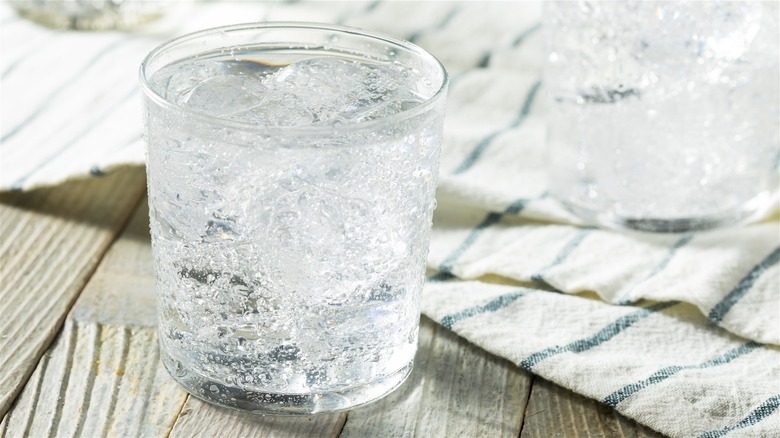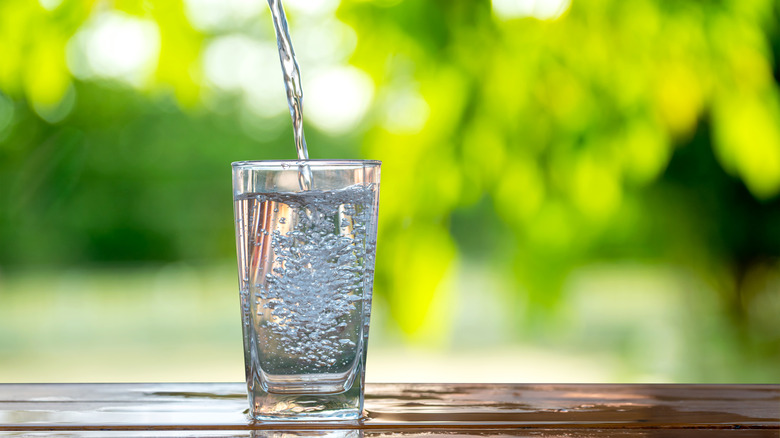Sparkling Water Is Kind Of A Big Deal In Europe
If you're from the United States, there's a chance you've never had to specify what you mean when asking for water. In Europe, however, you could be caught off guard when the waitress asks the question, "Sparkling or still?"
The popularity of sparkling water in European countries can be explained by precedence. Introduced in the 17th century, mineral water quickly spread across Europe. While different from modern-day sparkling water, mineral water does feature a naturally carbonated fizz. Over the years, bottled mineral water became the standard, mainly due to tap water being unsafe for consumption. As a result, still water garnered a reputation among Europeans as being less healthy and safe than carbonated water.
Europeans' love for carbonated water is so widespread that Paris even has sparkling water fountains. According to Conde Nast Traveller, Italians spend anywhere from $267.68 to $535.35 a year on sparkling water. However, Germany stands in a league of its own when it comes to sparkling water. The country alone consumes 138 liters, or 36.5 gallons, of sparkling water per year, accounting for 78% of Germany's total water consumption. Other European countries with a taste for sparkling water include Spain, the United Kingdom, the Netherlands, and France.
Sparkling water is trending upwards globally
No matter the restaurant, sparkling water is bound to be on any menu in Europe, but in recent years, preferences have begun to change. According to a 2019 study, bottled still water has now surpassed sparkling water in terms of European preference. Throughout the continent, only 37% of consumers favored bottled sparkling water, while 63% of consumers prefer bottled still water. Still, the demand doesn't seem to be dwindling. As a matter of fact, it's growing in the global market.
Though you may not have to specify between sparkling and still water in many other places, there's no doubt that Europe is no longer the only continent where carbonated water is a mainstay. Per a Marketing Analysis Report from Grand View Research, the sparkling water market came in at $29.71 billion globally in 2020, and it's expected to increase each year until 2028 by 12.6%.
This is likely due to the rise of health-conscious consumers. For instance, sparkling water can help increase hydration and also help improve digestion. Because carbonated water, such as LaCroix, mimics the bubbly feeling provided by soft drinks, many are opting for the beverage rather than its sugar-laden alternative.

